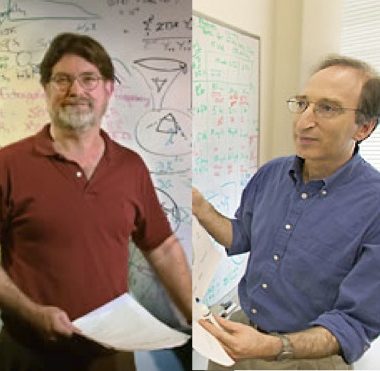
Nobel Physicists Discuss The “End” (and the Beginning) of the Universe
George Smoot’s very first astronomical observation was that the moon was tagging along behind the family car “like my dog, but with greater speed and persistence.” By his senior year at MIT his curiosity had focused on the cosmic microwave background radiation (CMB), newly discovered remnants of the big bang. To do something about it he came to Berkeley in 1970, an MIT Ph.D. under his belt. The instruments Smoot and his colleagues flew on NASA’s Cosmic Background Explorer in 1989 revealed the first evidence for minute temperature variations in the smooth CMB. His 2006 Nobel Prize honors the discovery of these seeds of galaxies, sources of the galactic spiderwebs that fill the universe today.
As a kid Saul Perlmutter wasn’t fascinated by telescopes; instead he mulled fundamental questions while practicing his violin, like “Will the universe last forever?” At Berkeley Lab in the late 1980s Perlmutter realized telescopes could answer those questions. Ten years later he announced that the Supernova Cosmology Project he’d cofounded had discovered what no one could have expected: the expansion of the universe isn’t slowing down, it’s accelerating. Soon named dark energy, the mechanism remains mysterious. By devising ways to find supernovae by the dozens, Perlmutter and his colleagues inspired a race with their rivals that turned cosmology upside down, led to a string of awards, and culminated in last year’s Nobel Prize in Physics.
Please note new 7:30pm start time.